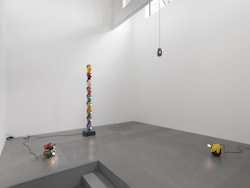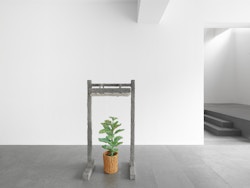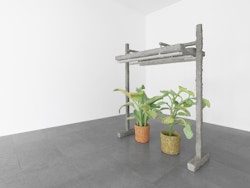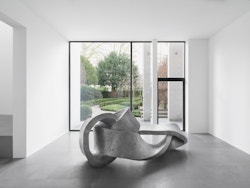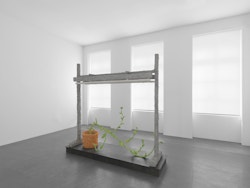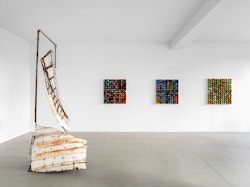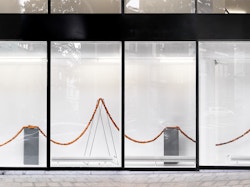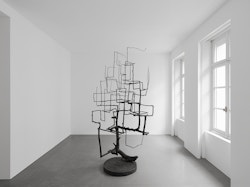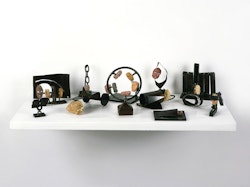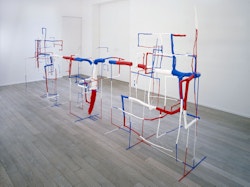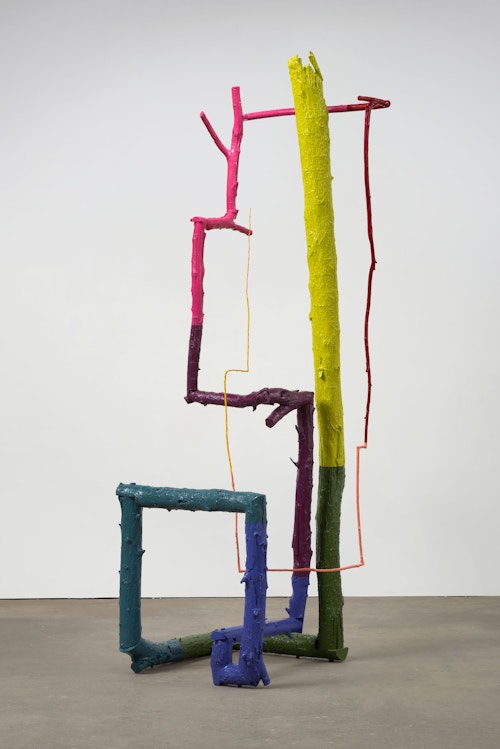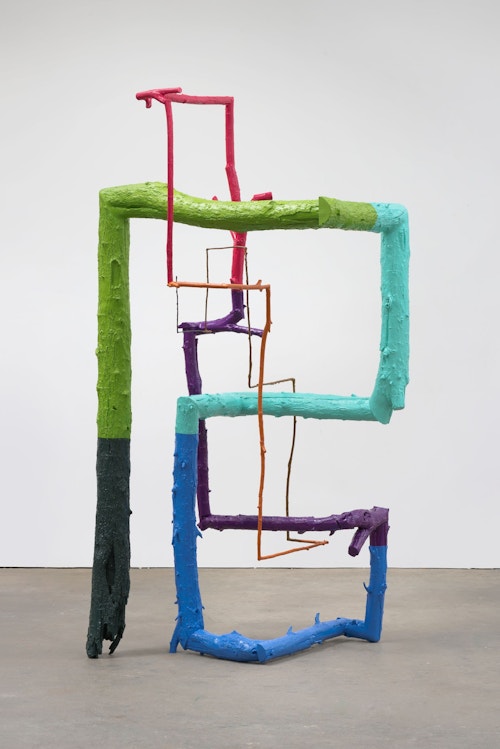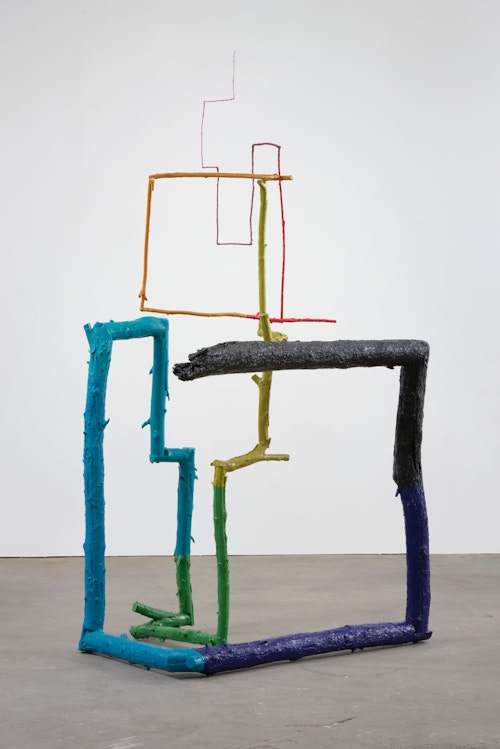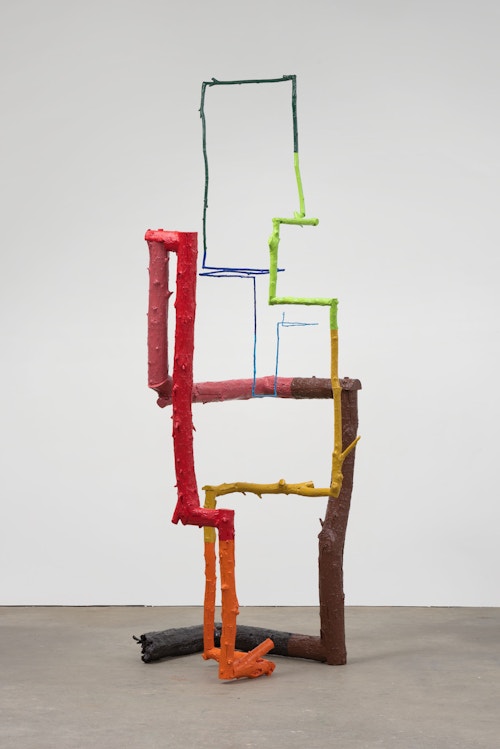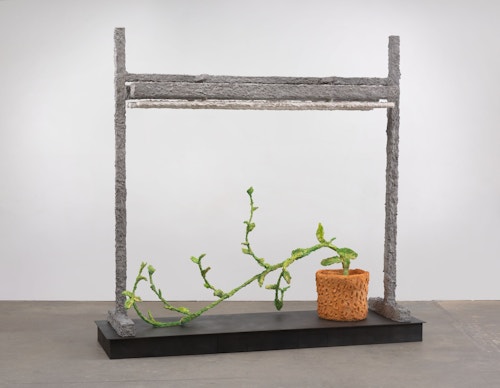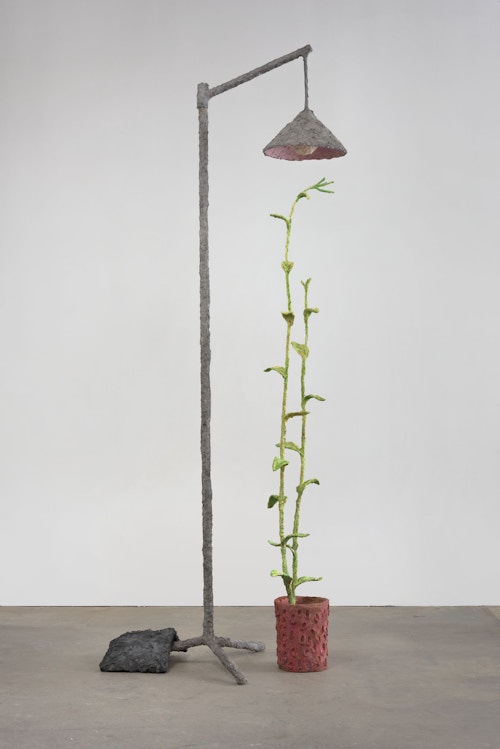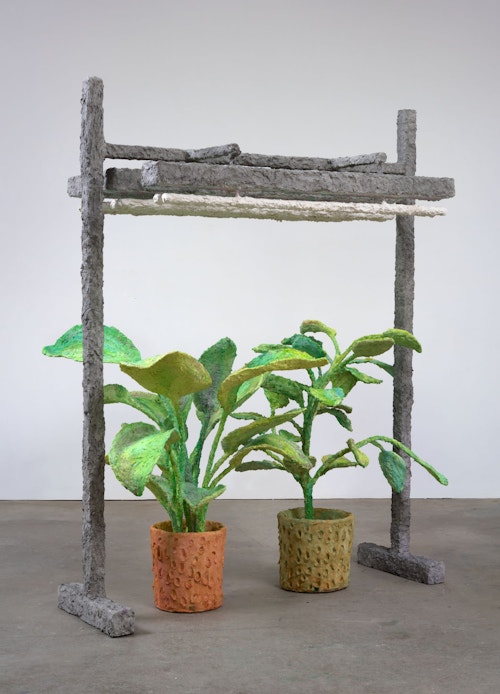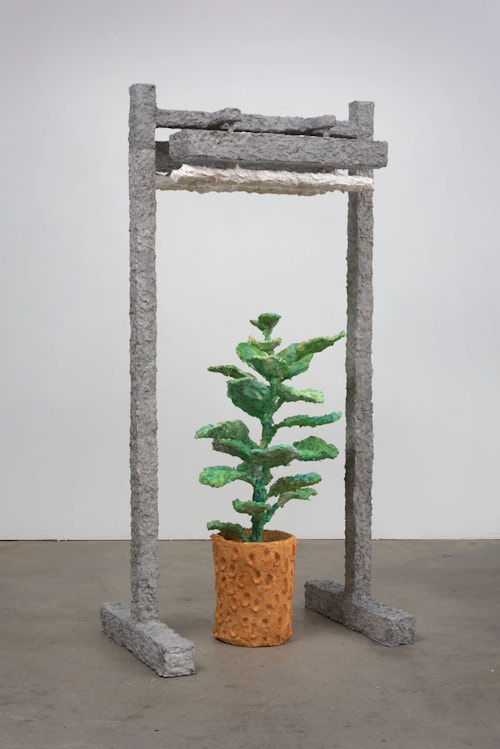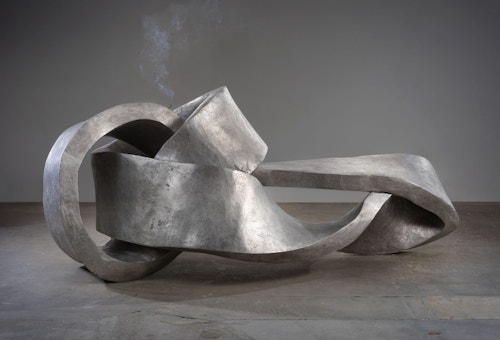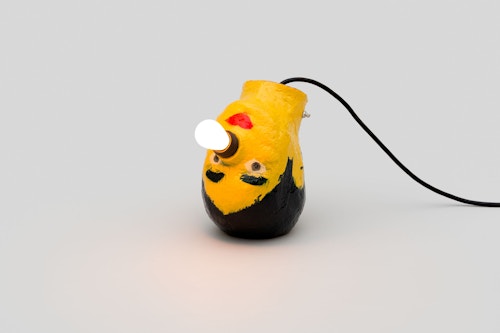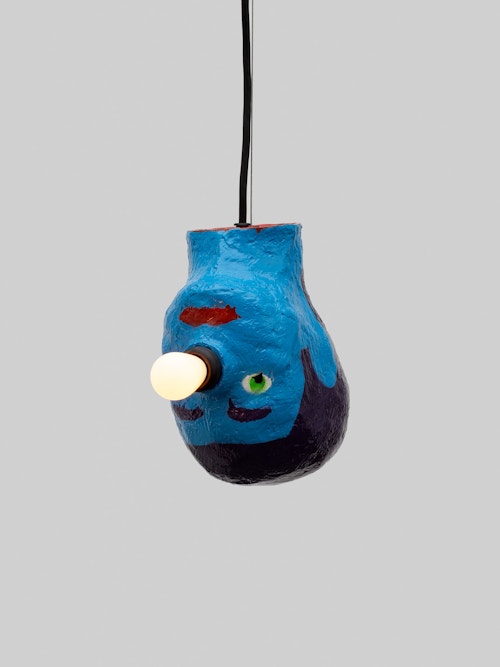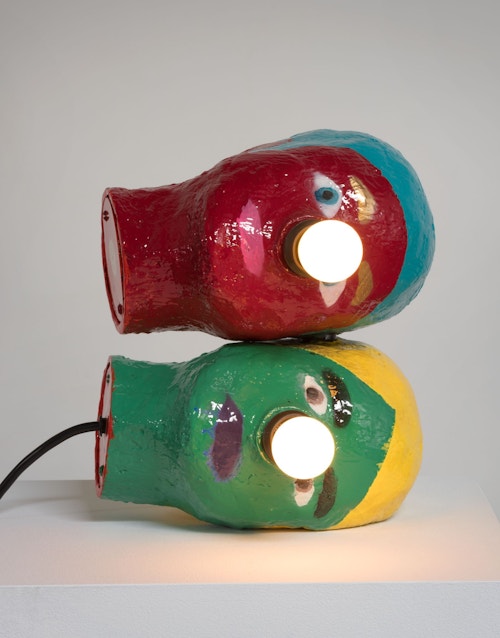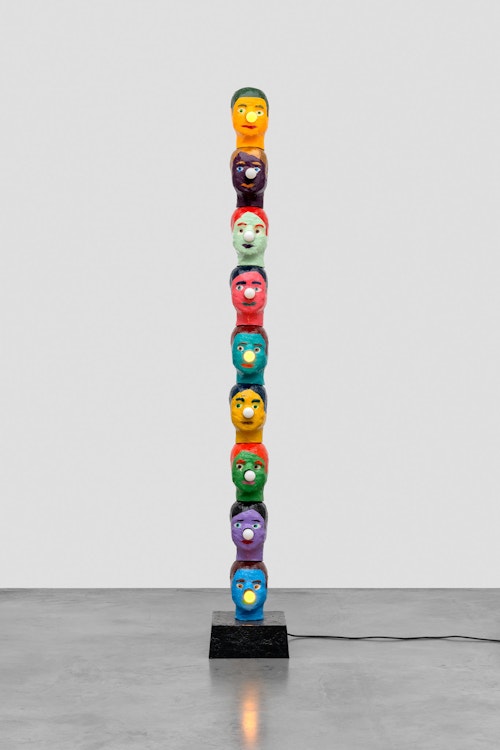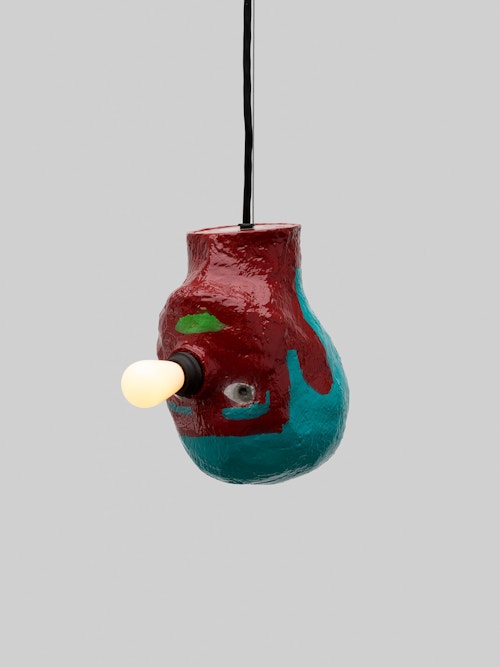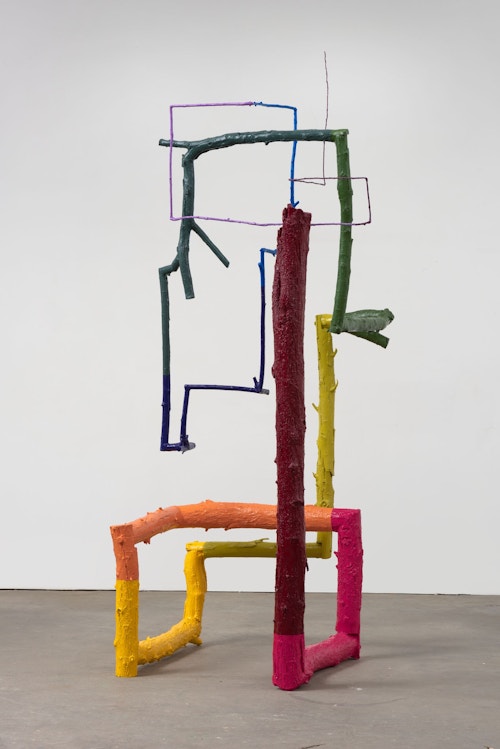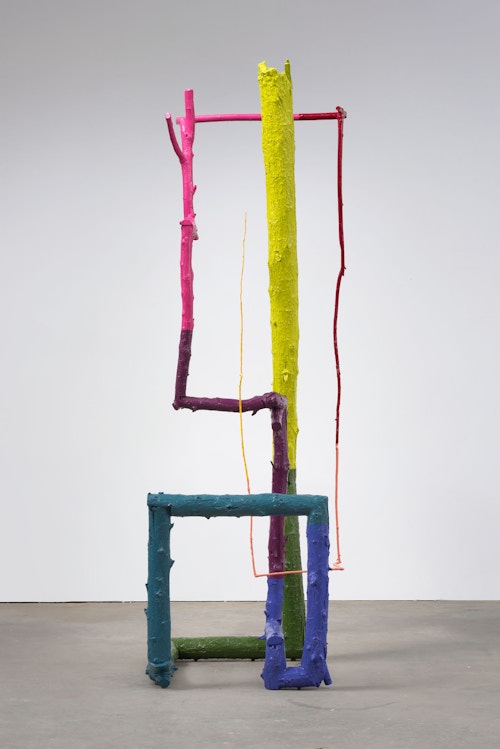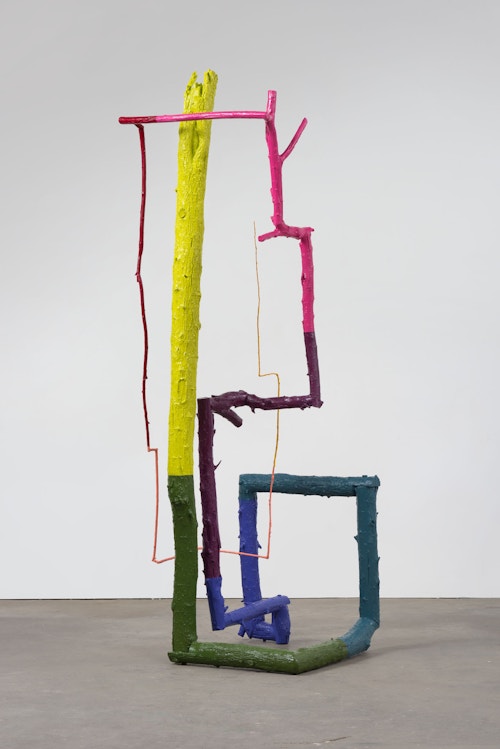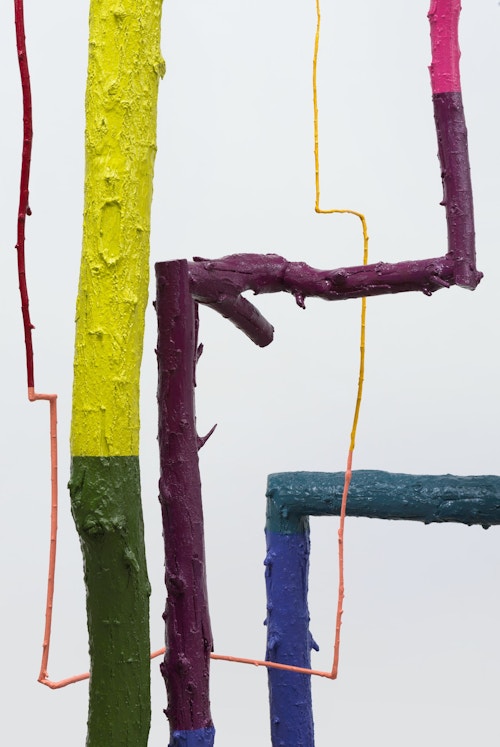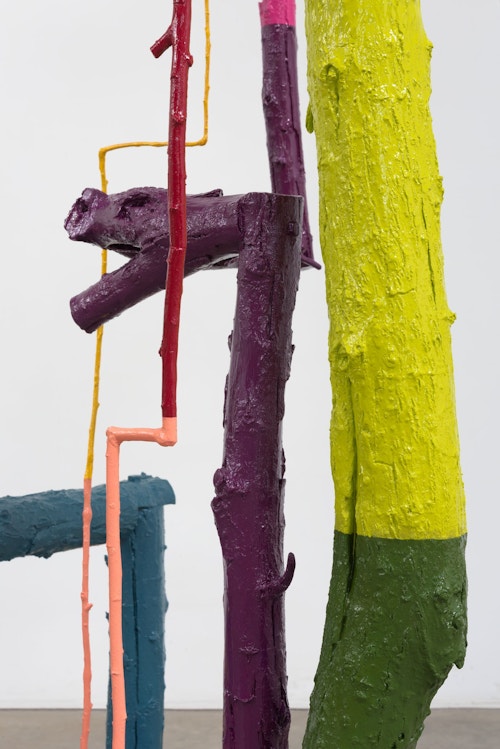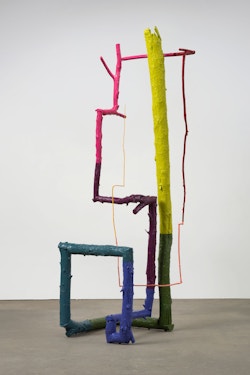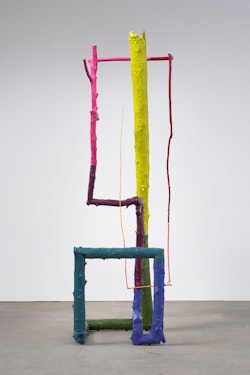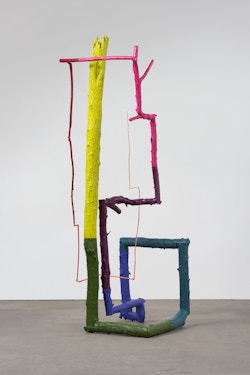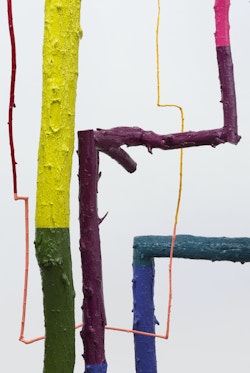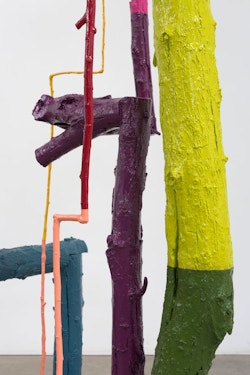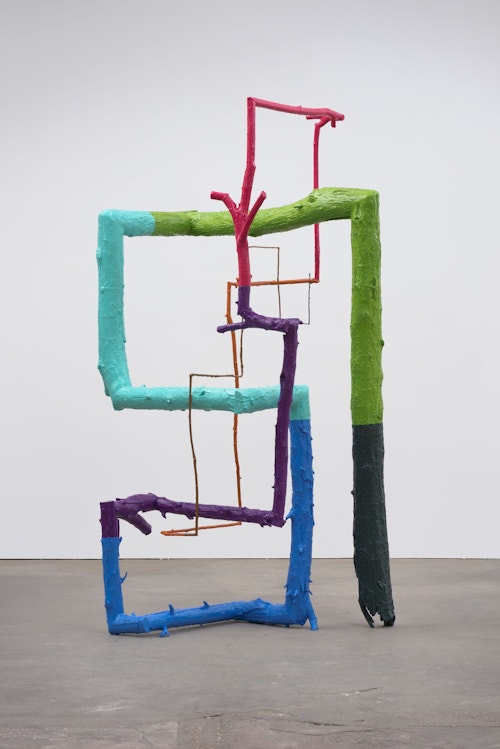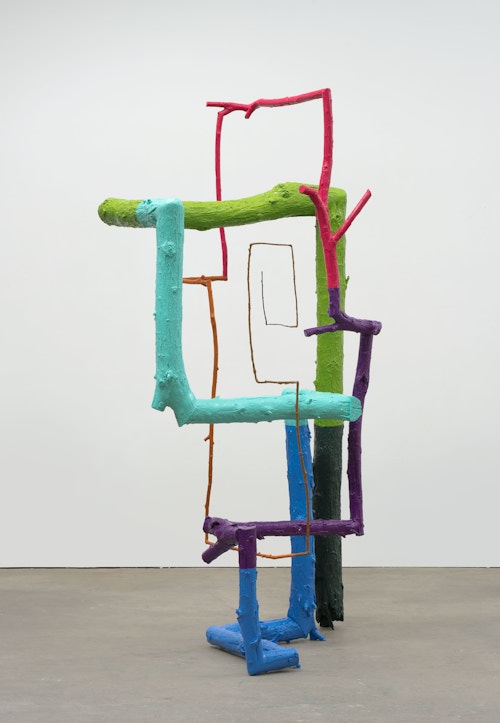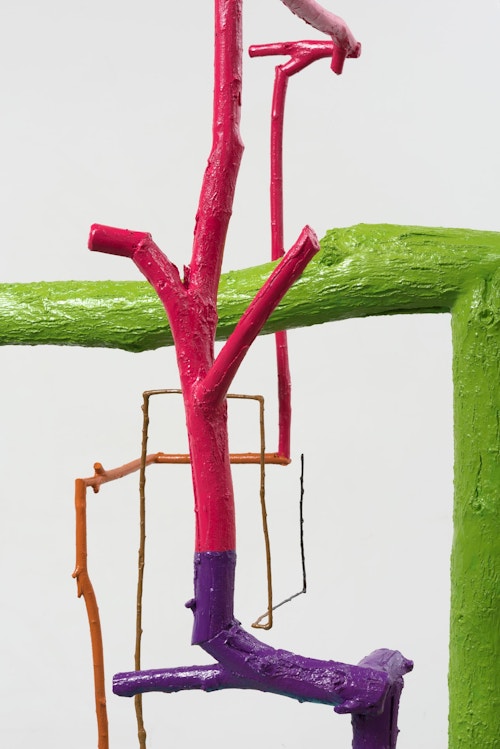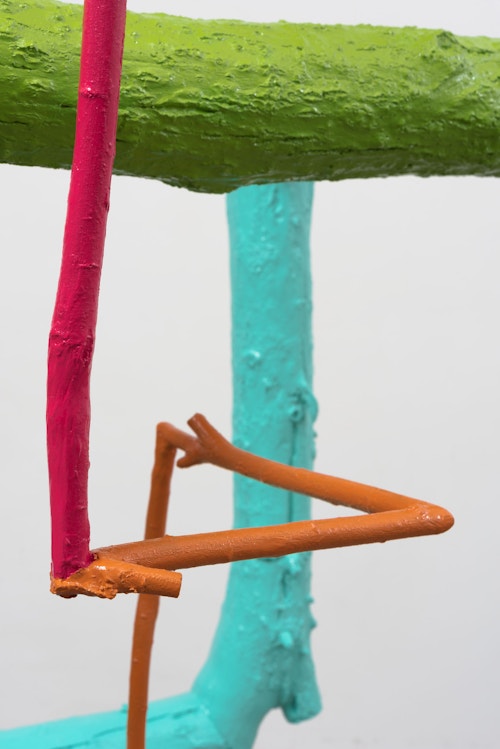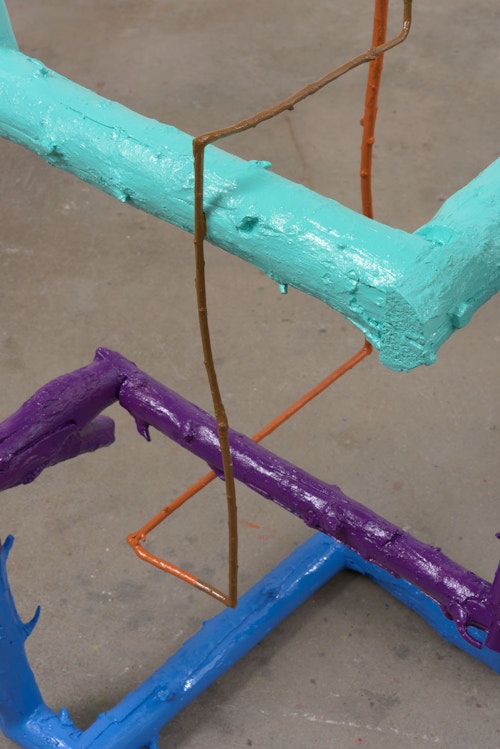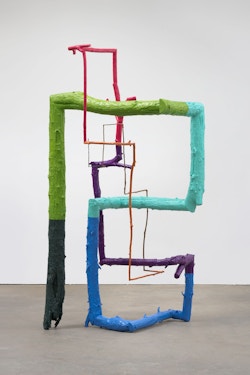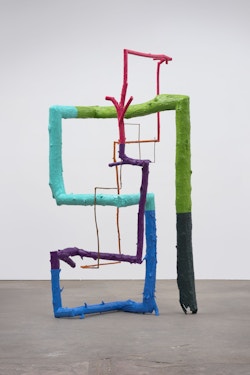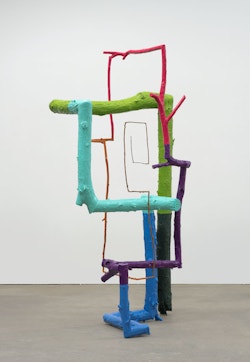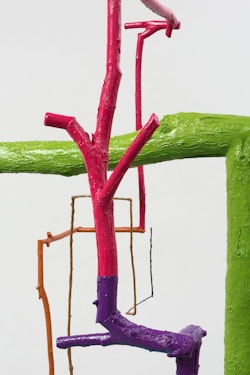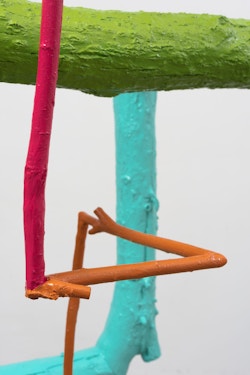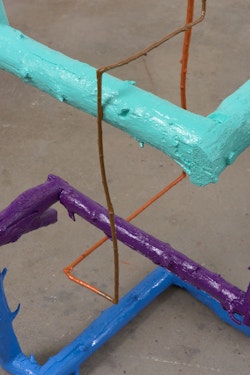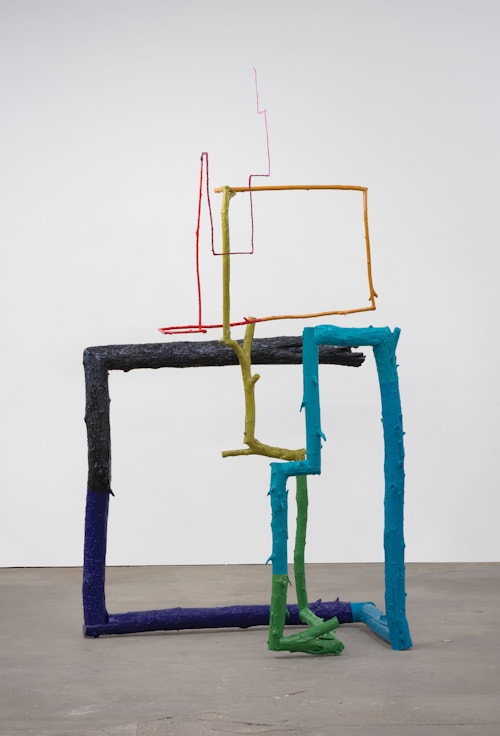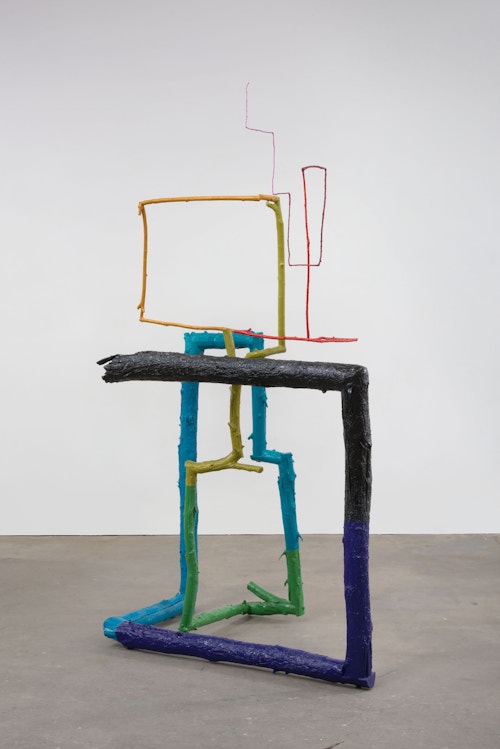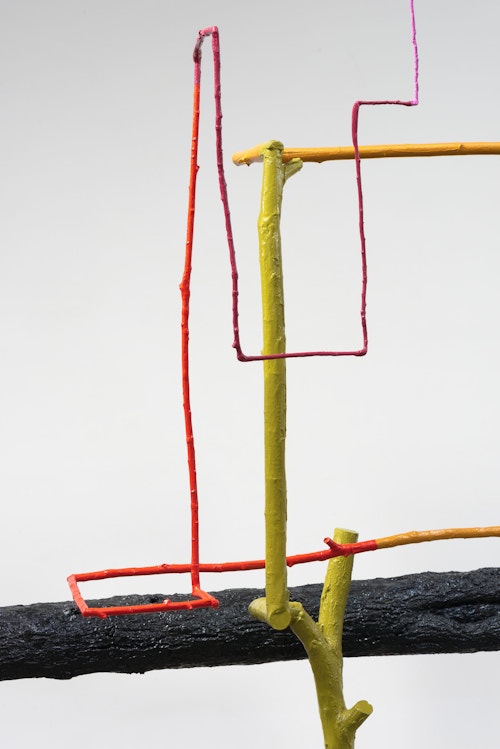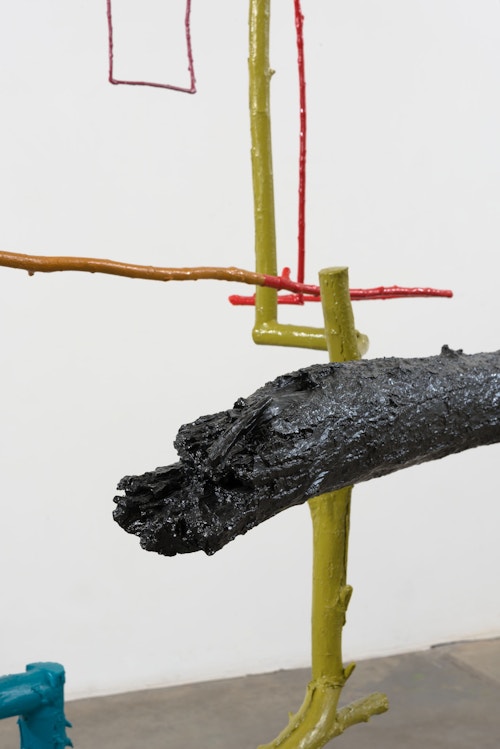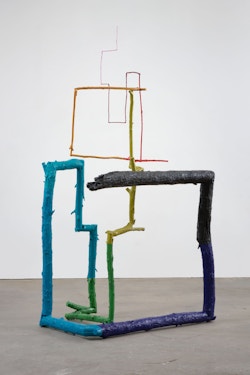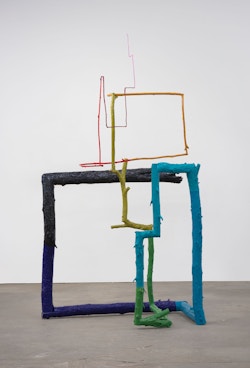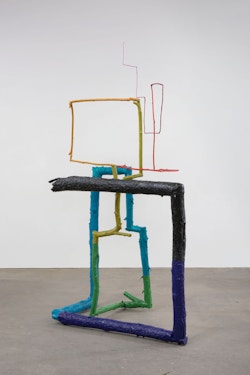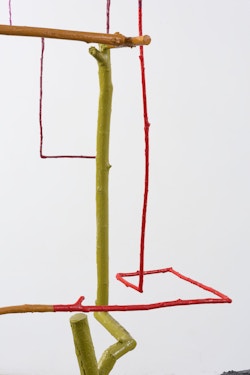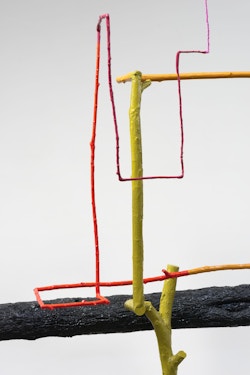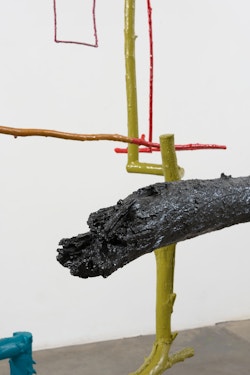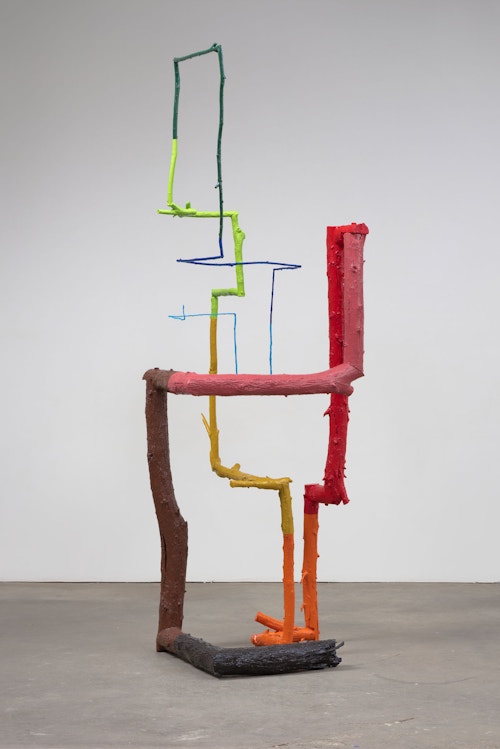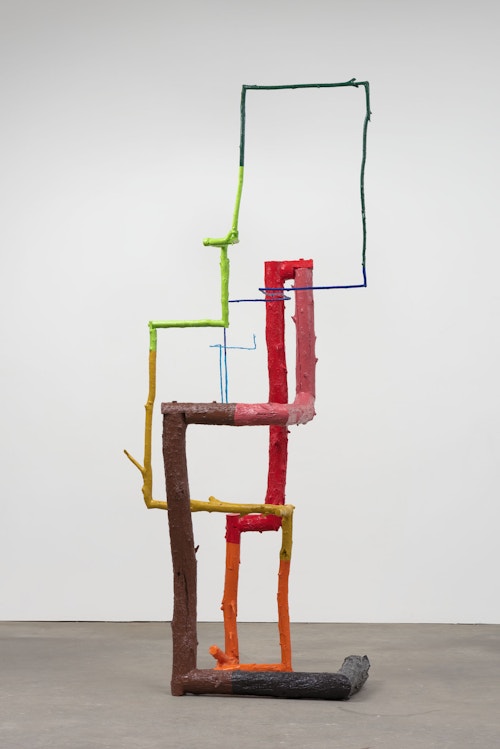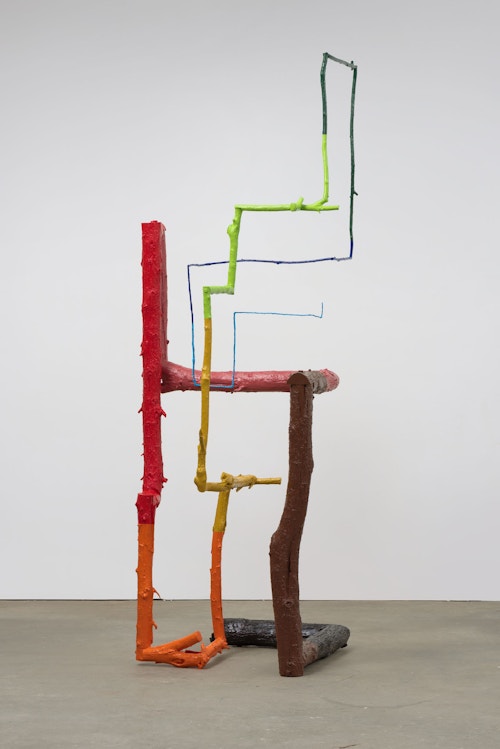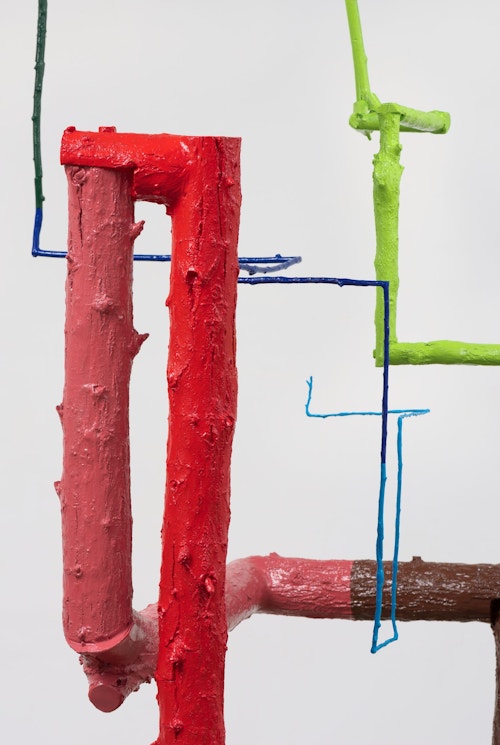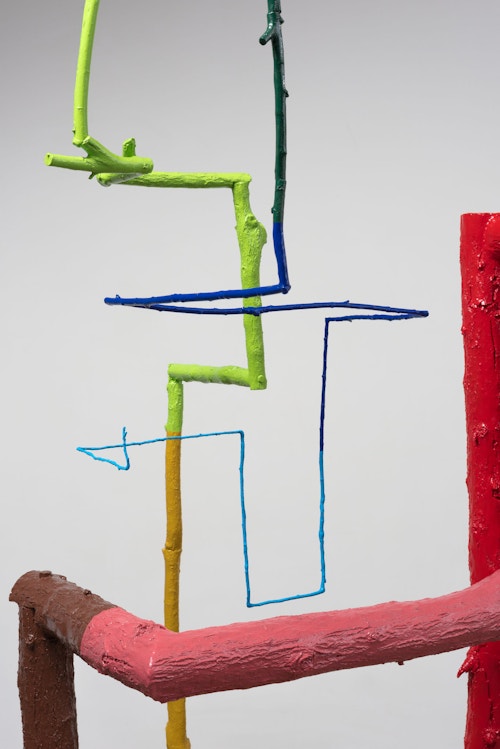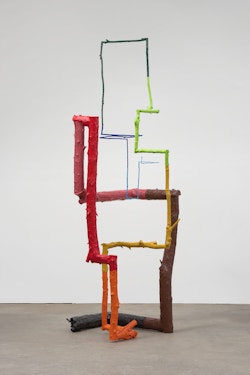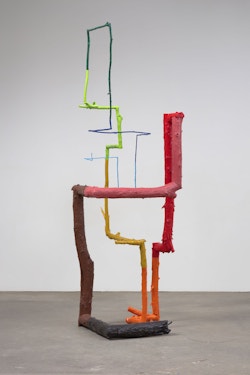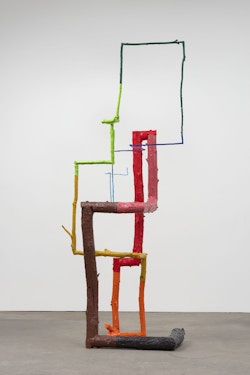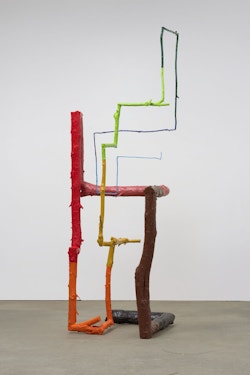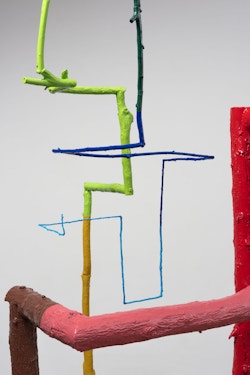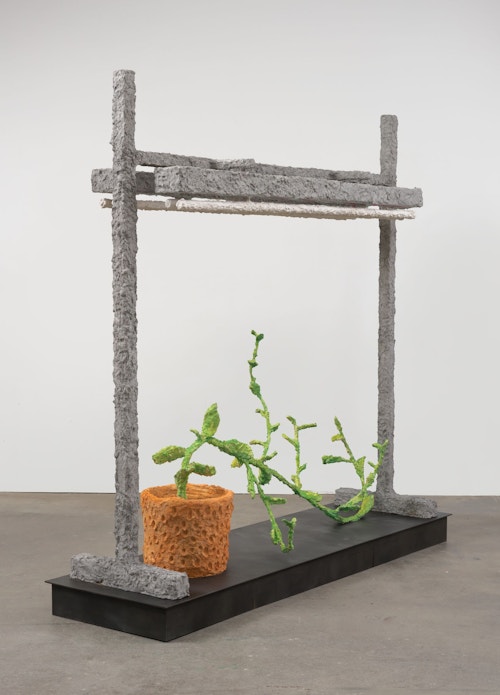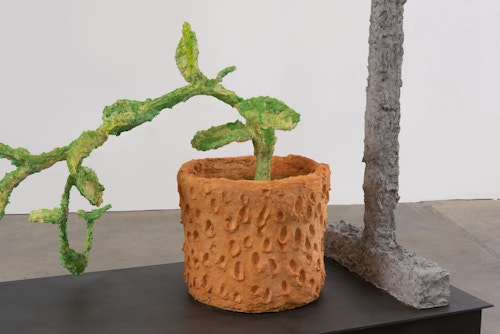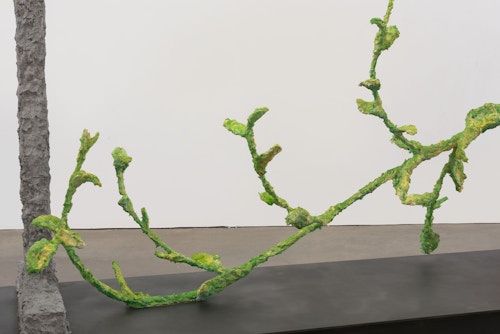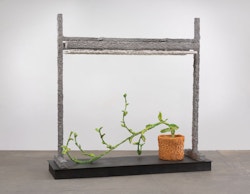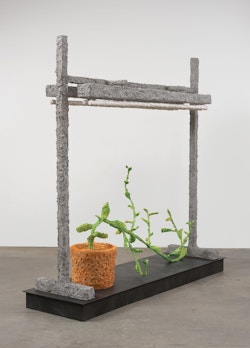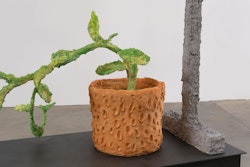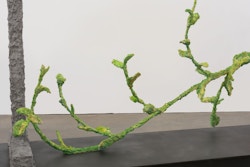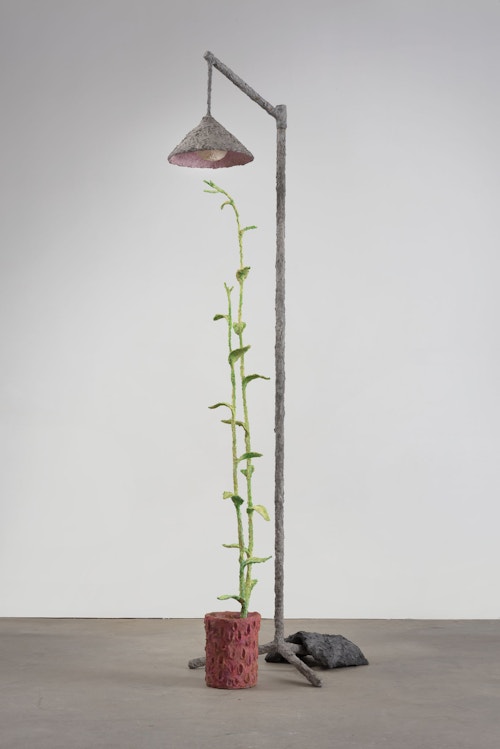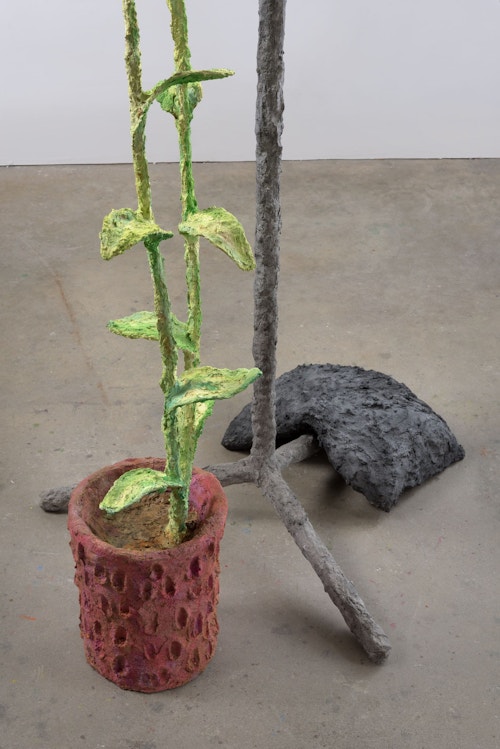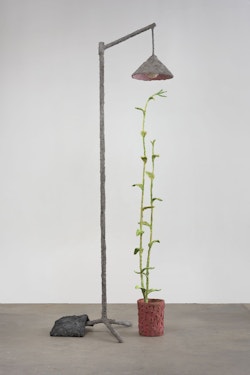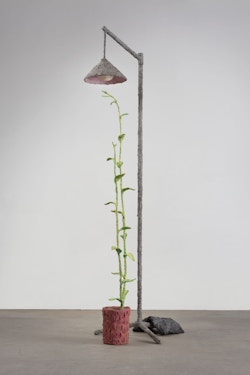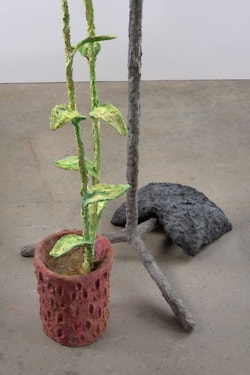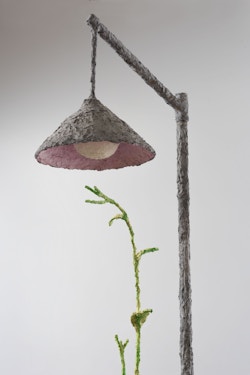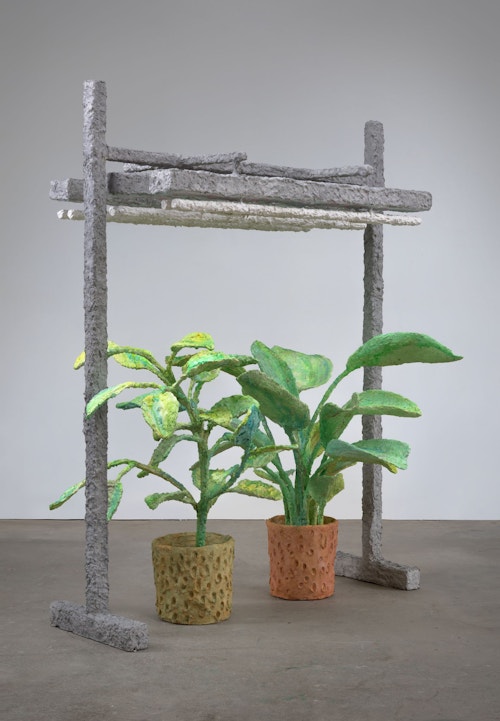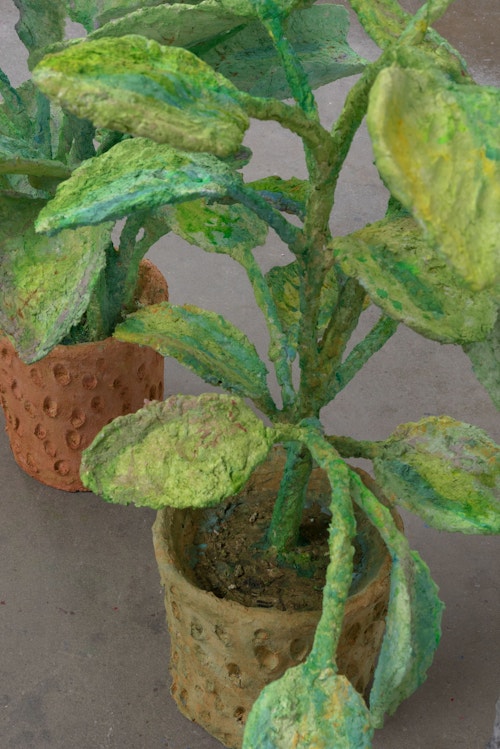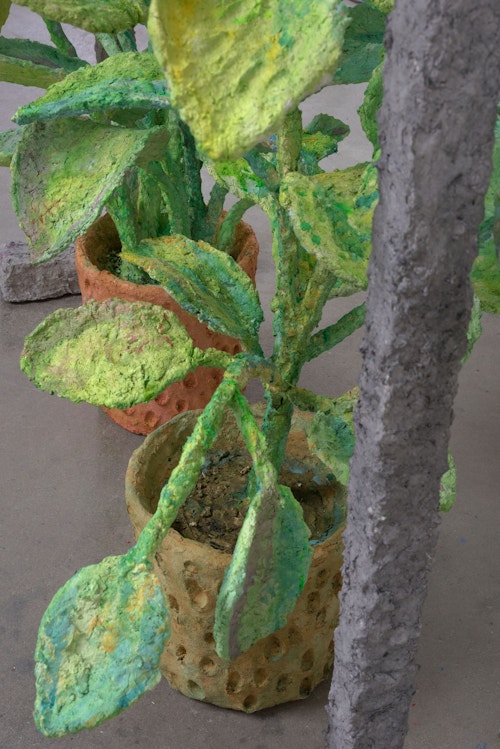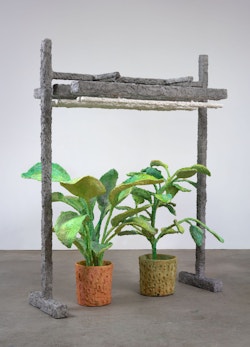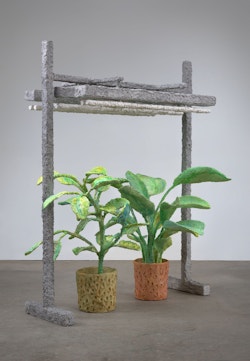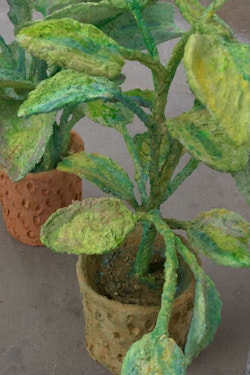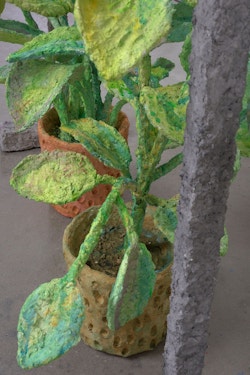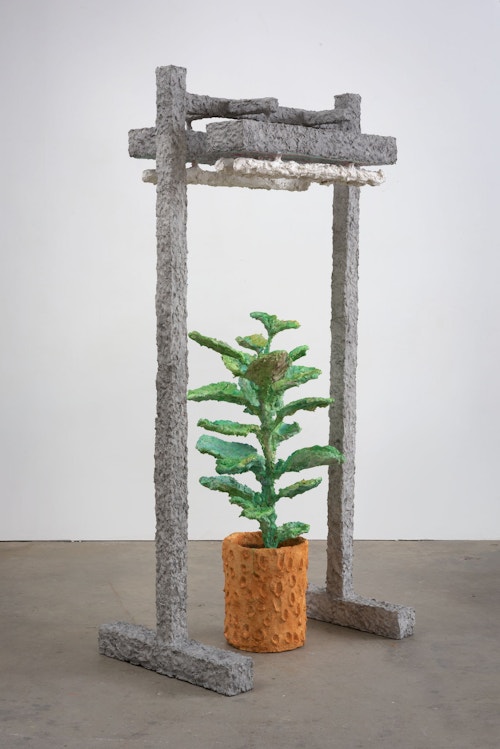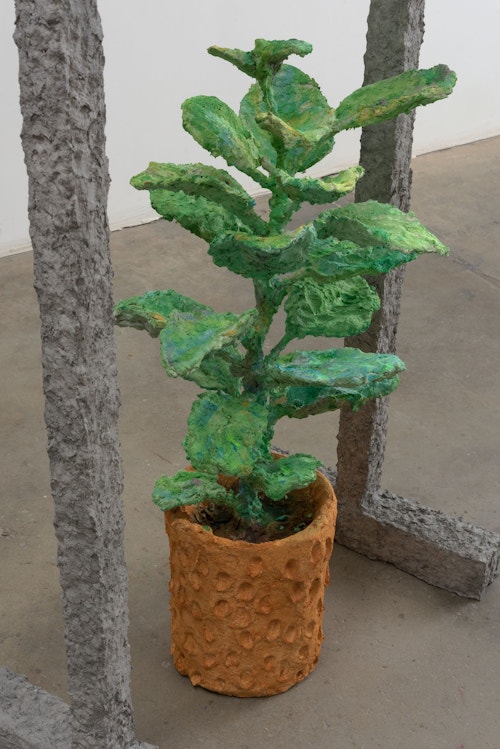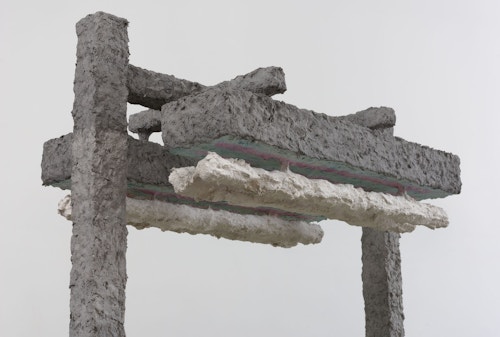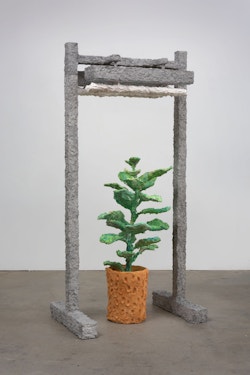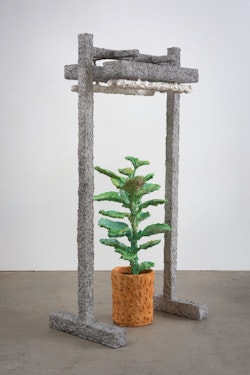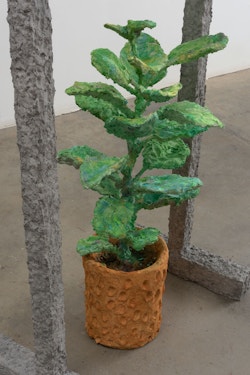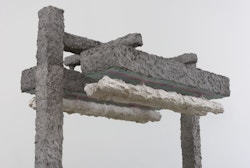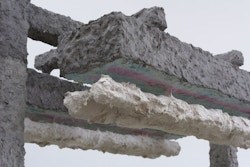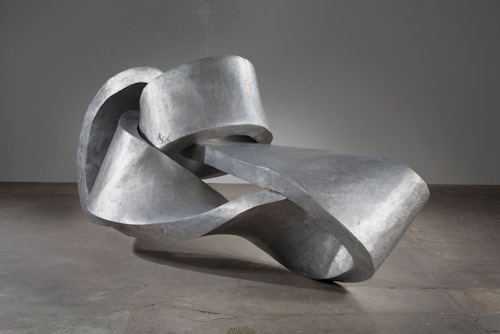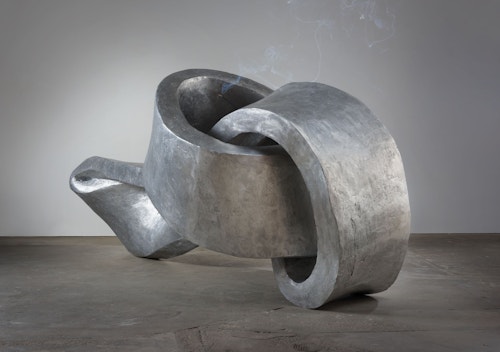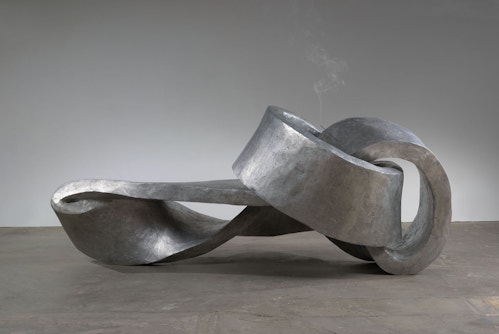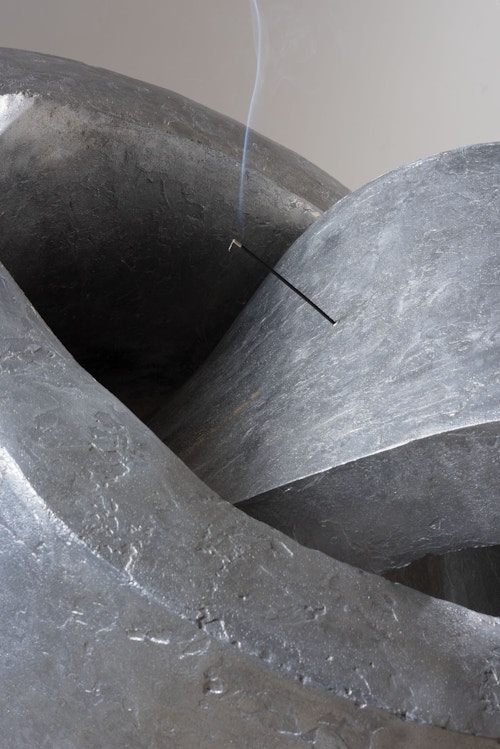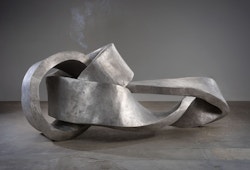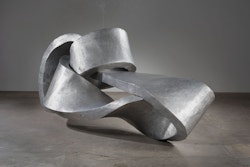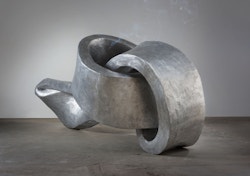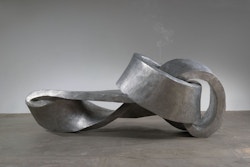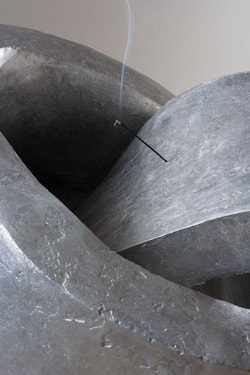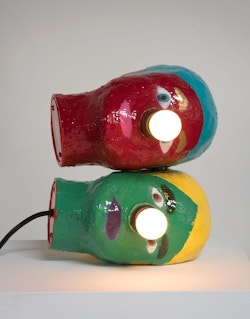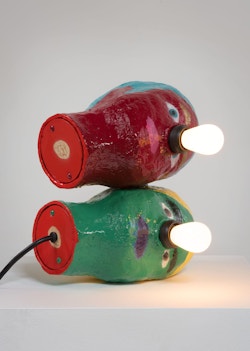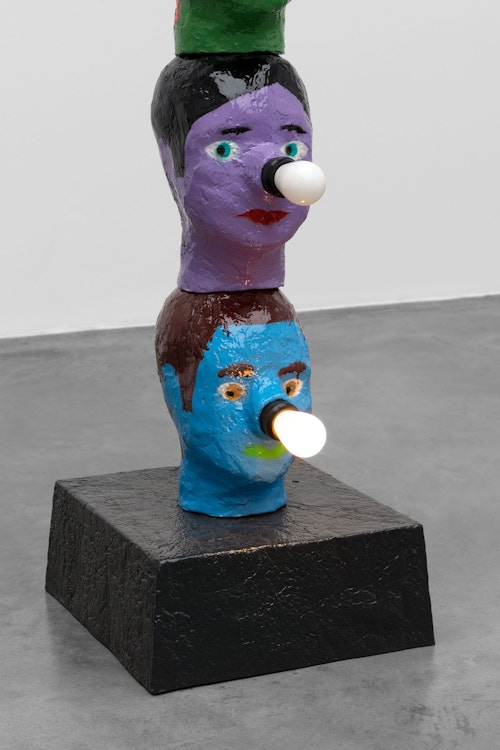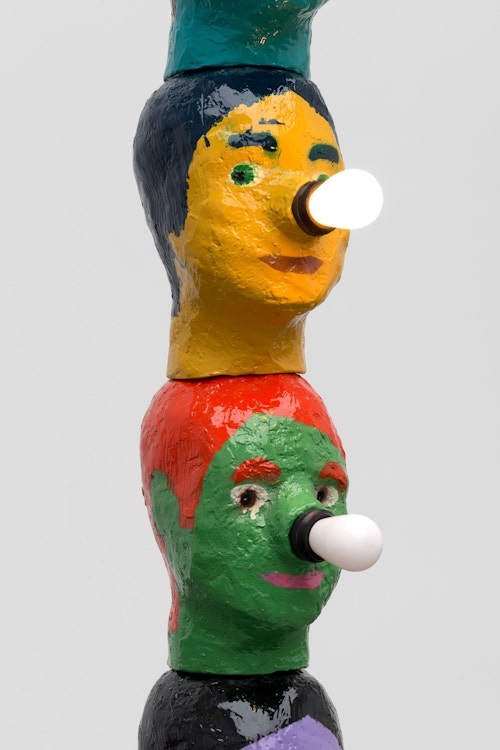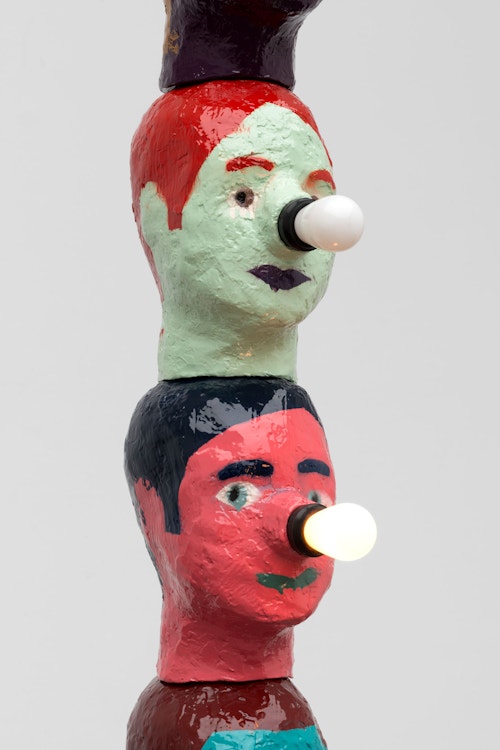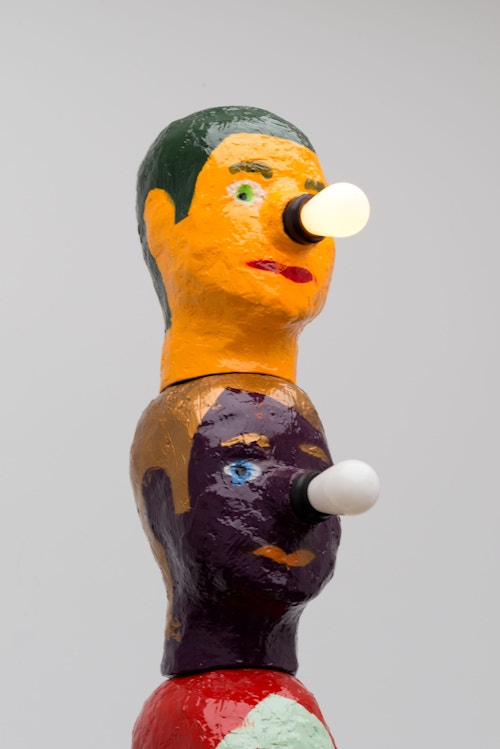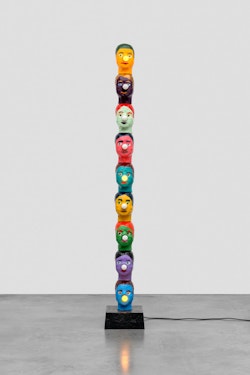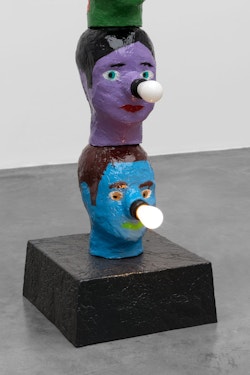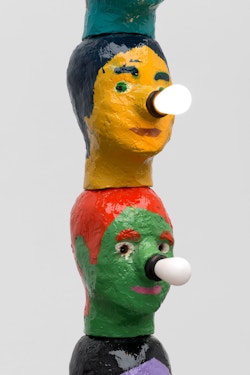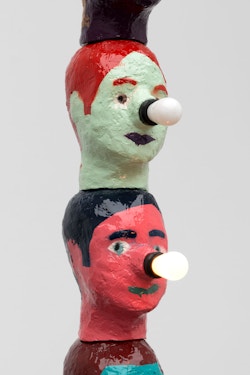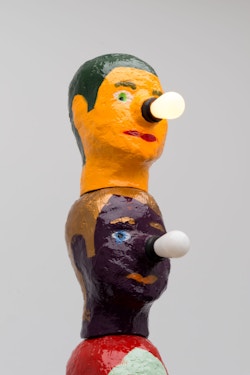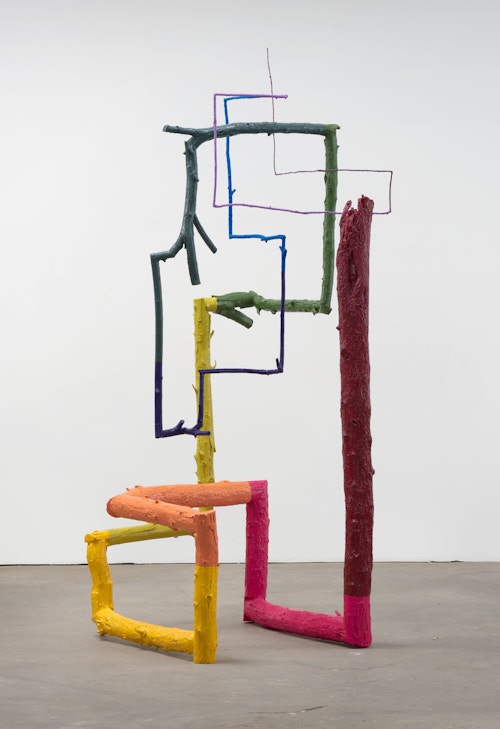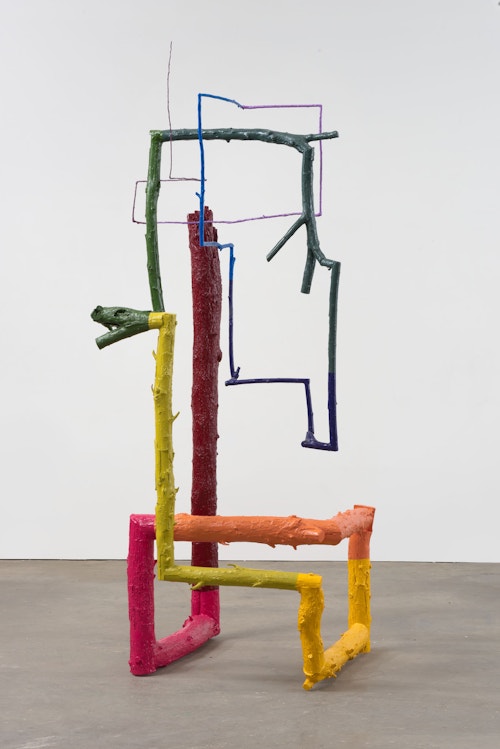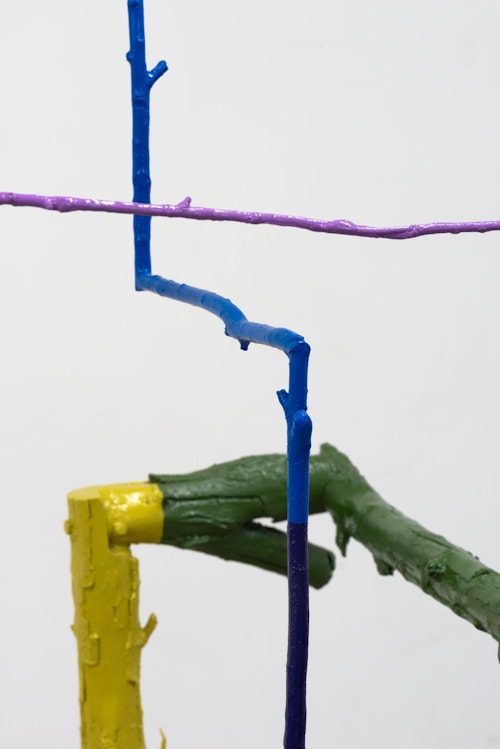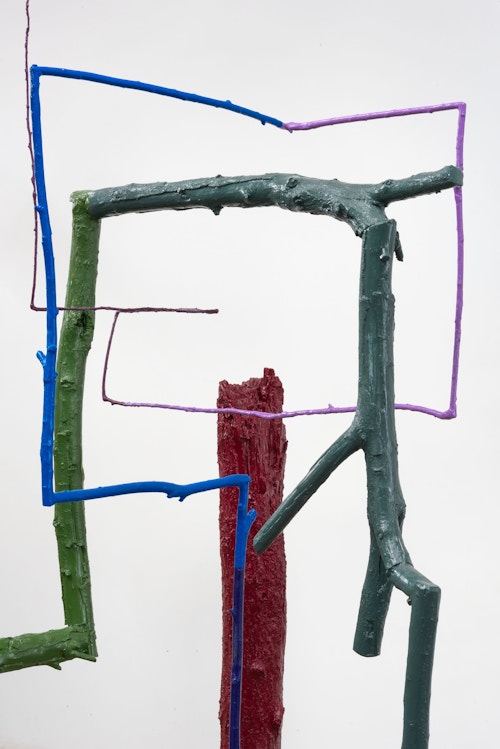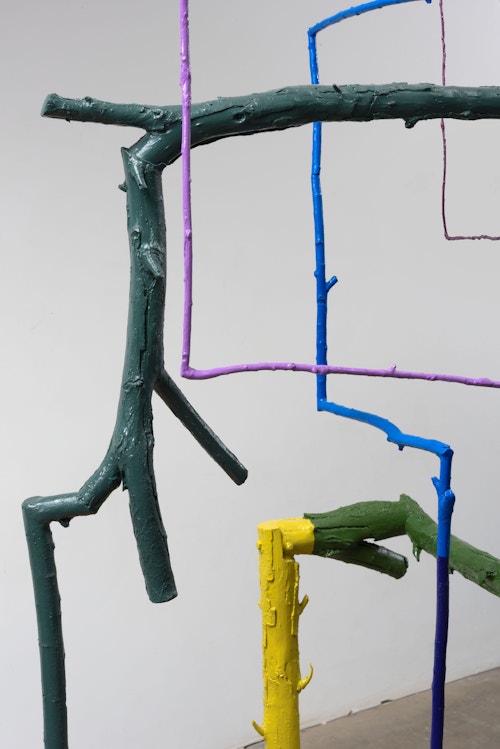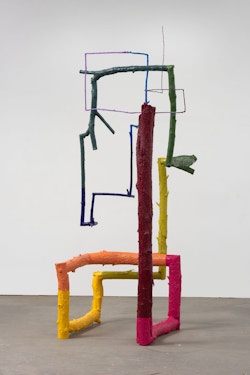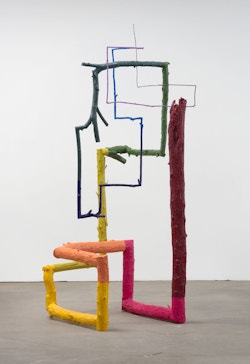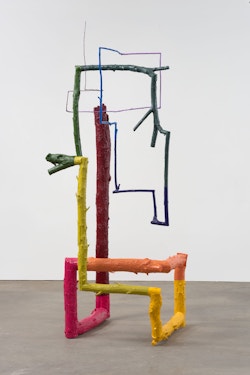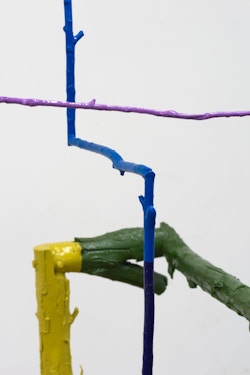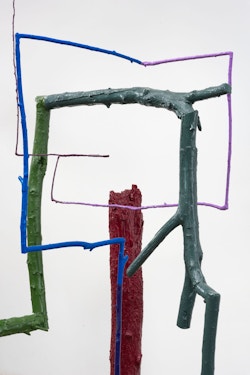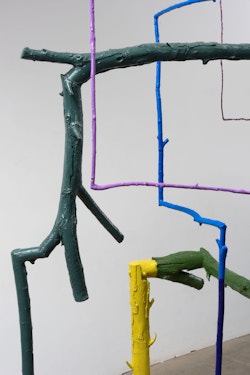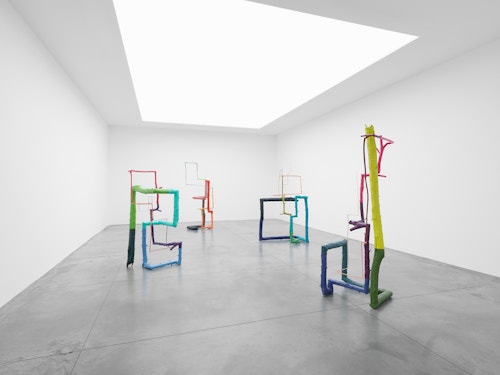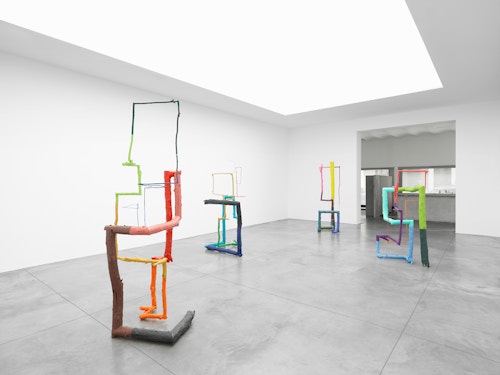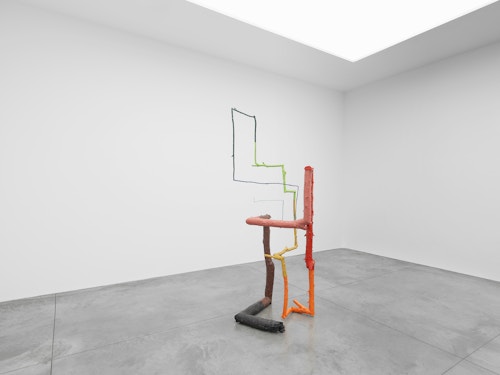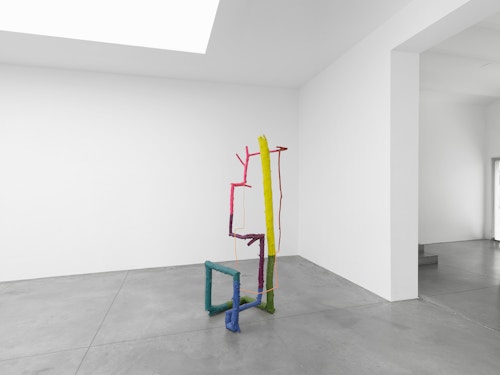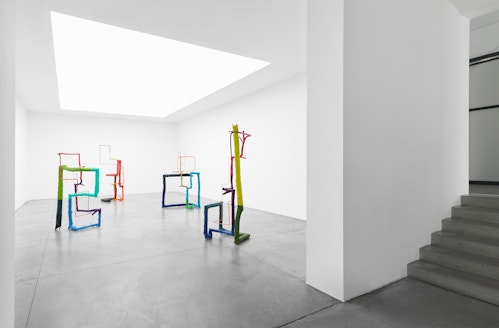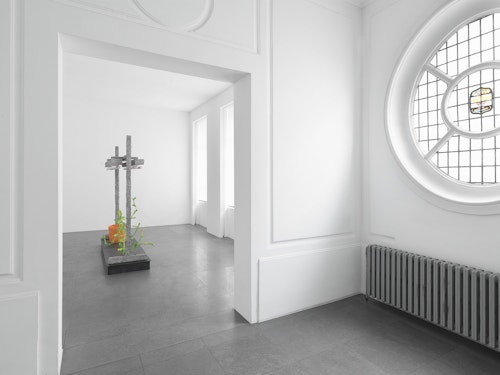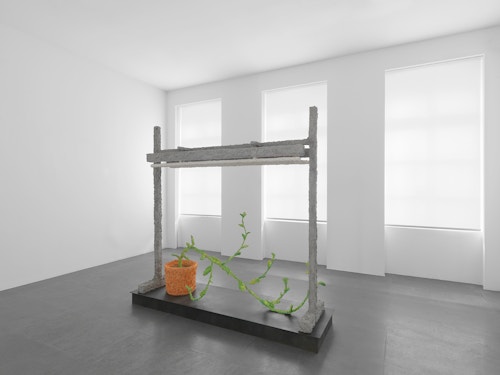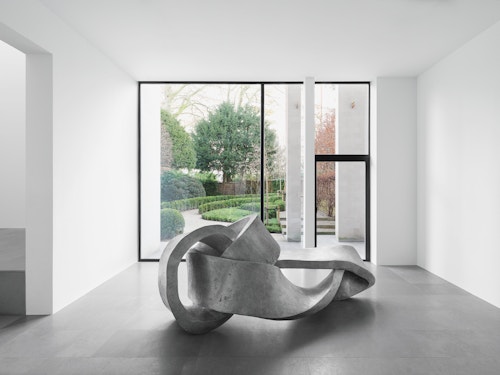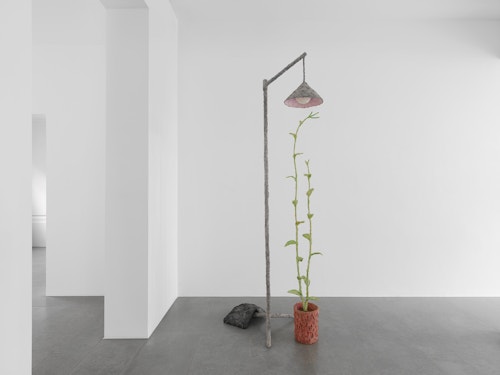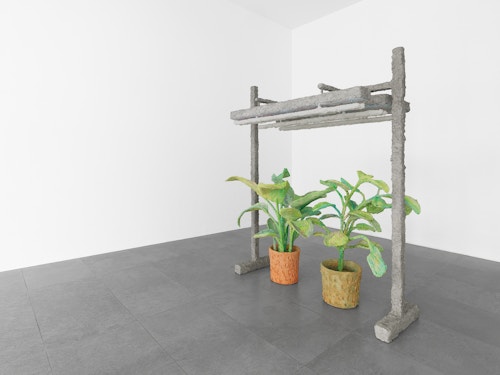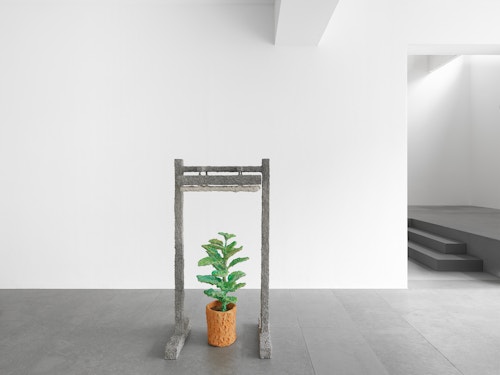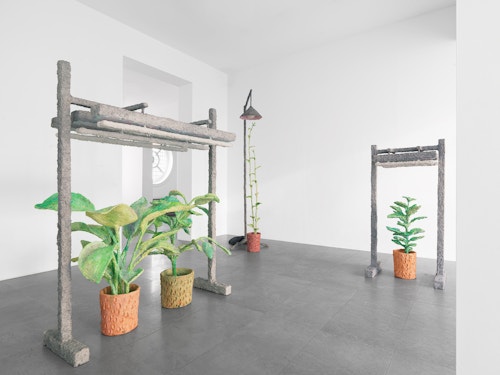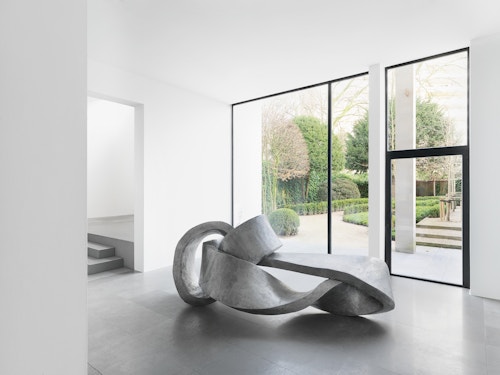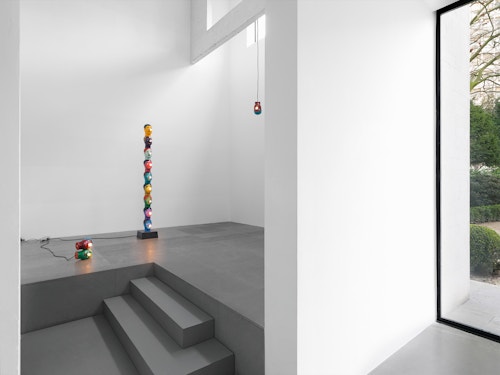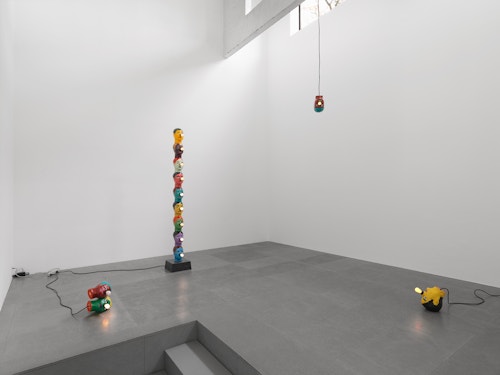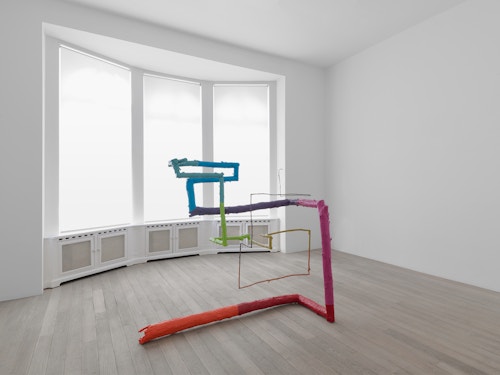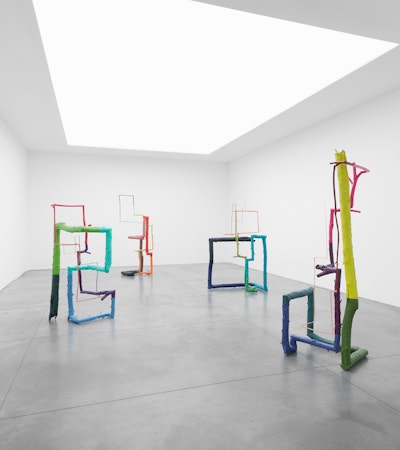
Evan Holloway
For his fifth exhibition at Xavier Hufkens, Los Angeles based artist Evan Holloway brings together new work in an extensive use of media, comprising ongoing series as well as more recent developments within his oeuvre. Drawing from his continuing interest in California’s contemporary culture and everyday objects—trees, plants, lamps, loops—Holloway’s sculptures are characterized by their formal experimentation and a love of craftsmanship. His work emphasises both qualities of individual human activity and the material experience: the way physical components are incorporated and assembled.
I’ve always privileged the way the work is experienced over its purely visual elements. (…) I’m always crafting experiences as much or more than I’m making “visual art.”

Although Holloway’s practice encompasses hybrid forms of sculpture, his interests have always been associated with the artistic heritage of the West Coast and build on the legacy of modernist and formalist sculptors such as Anthony Caro or Ibram Lassaw. This is manifested in Holloway’s tree sculptures, notably in his new “single line” trees, presented for the first time in this exhibition. Here, each bronze tree is recomposed to “grow” through only one limb, without any additional branches. The trees are multi-colored, and each color used, often tertiary, is preceded or followed by another color with which it shares a common hue conforming to color theories. If the branches were spread out into a single line, it would be apparent that they are methodical chromatic progressions. By contrast to organically occurring forms, these trees subject to human interference have been manipulated to reveal sharp angles, unpredictable colors and asymmetric shapes. The result is a seemingly off-beat relationship between form and color.
Another take on human manipulation of natural objects through art is apparent in his plant and lamp sculptures. The fabricated plants, such as Lactuca Serriola, are taken from the Southern Californian flora, and are paired with imitation growing-lamps looming overhead. Electrical light might be absent in the sculpture, yet the viewer’s understanding of the way plants and lamps interact results in the creation of an imaginary source of warmth and light. The idea of growth thus implied is enhanced by an impression of upward motion of the plants, visible for instance in Bitter Lettuce. These works can be understood not only as an assemblage of materials that is lifelike, but also as a spatial composition of objects and materials resembling the engagement with space of mid-twentieth century formalist sculptors.
Holloway’s head sculptures embody multi-colored heads with lighted noses blinking in a sequence of predetermined patterns. The heads are configured either stacked as “totems”, paired, or individually hanging upside down. Projecting a degree of empathy or antipathy, the viewer reacts to the noses blinking in an order of fixed patterns and attributes significance to the changes in the lights. The colored heads inevitably hint not only a notion of a mutual connection between the heads positioned in space but also suggest a hierarchal relationship within a community questioning who’s above and who’s below.
Recumbent form with incense is an allusion to the oft-repeated “modern” sculptural form, the Möbius loop. Because it contains a small incense stick, it is the smell that reaches the visitor before it sees the gigantic infinity symbol. When circling around the large metal work, scent and object coincide in one experience, the incense occupying a lot more space than its ponderous support. Rather than being a simple shape in space, the sculpture now expands beyond its conventional role and reveals its “meta” intention: it is a sculpture about sculpture. At the same time, as a result of the smoke and scent of the burning incenses, one can interpret this as related to post-war California’s infatuation with Eastern, esoteric mysticism and mind-altering substances—synthetic and otherwise.
Through their formal rearrangement, each work can be conceived as a conceptual product on its own, whilst intricately interweaving subtle remarks on modern sculpture’s tradition. Still, Holloway’s intention in creating an experience of purely visual elements is not by definition merely about the materiality of the work. What holds his attention just as much are hidden constructions, indicating that in his work the visible surface is just as relevant for its capacity to uncover an unseen structure of existence.
Evan Holloway (b. 1967, La Mirada, CA) lives and works in Los Angeles. His works feature in many public collections, including the Whitney Museum of Contemporary Art, Hammer Museum, LACMA, MCA, MOCA and the Smithsonian Hirshhorn Museum. Recent group exhibitions encompass Los Angeles - A Fiction at Astrup Fearnley Museet, Oslo (2016-2017); Don’t Look Back: The 1990s at MOCA at The Geffen Contemporary at MOCA, Los Angeles (2016) and Still Life: Capturing the Moment at Palm Springs Art Museum, Palm Desert (2015-2016).
